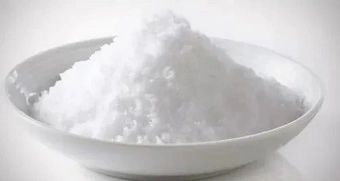Sodium Hydrosulfite: A Vital Component in Organic Synthesis
09 Dec 2024 • by Natalie Aster

Sodium hydrosulfite, also known as sodium dithionite, is a versatile reducing agent widely employed in various industries. Its unique chemical properties make it an indispensable reagent in organic synthesis, offering efficiency and reliability in numerous chemical processes.
Chemical Properties of Sodium Hydrosulfite
Sodium hydrosulfite is a white crystalline powder. It is highly soluble in water and possesses strong reducing capabilities due to its ability to donate electrons readily. This reactivity makes it a powerful agent in reducing reactions, especially in complex organic syntheses. Sodium hydrosulfite effectively reduces ketones, aldehydes, and certain metal ions. While stable under specific conditions, it decomposes in acidic or heated environments, releasing sulfur dioxide. Its compatibility with various solvents enhances its usability in diverse chemical processes.
Major Applications of Sodium Hydrosulfite in Organic Synthesis
Reduction of Organic Compounds
One of the primary uses of sodium hydrosulfite in organic synthesis is the reduction of nitro groups to amines. This transformation is crucial in the production of pharmaceuticals, dyes, and agrochemicals. The reagent’s selectivity ensures minimal side reactions, making it ideal for high-purity requirements.
Desulfonation Reactions
Sodium hydrosulfite plays a pivotal role in desulfonation reactions, where it effectively removes sulfonic acid groups from aromatic rings. This process is essential in modifying aromatic compounds for further synthetic applications, particularly in drug development.
Dye and Pigment Synthesis
In the textile and dye industries, sodium hydrosulfite is instrumental in synthesizing vat dyes and pigments. Its ability to reduce insoluble dyes into soluble forms facilitates their application on fabrics, ensuring vibrant and durable colors.
Regeneration of Aldehydes and Ketones
The compound is frequently employed to regenerate aldehydes and ketones from their respective bisulfite adducts. This reaction is critical in preserving sensitive carbonyl compounds during multi-step organic syntheses.
Advantages of Using Sodium Hydrosulfite
High Efficiency
Sodium hydrosulfite offers rapid and efficient reduction, significantly shortening reaction times compared to alternative reducing agents. Its effectiveness reduces the need for excessive reagent quantities, enhancing overall yield.
Selectivity
The reagent’s high selectivity minimizes the formation of undesired byproducts, ensuring cleaner reaction profiles. This attribute is particularly beneficial in pharmaceutical synthesis, where purity is paramount.
Cost-Effectiveness
Compared to other reducing agents, sodium hydrosulfite is relatively inexpensive. Its affordability, combined with its efficiency, makes it a cost-effective choice for industrial-scale applications.
Conclusion
Sodium hydrosulfite stands out as a vital component in organic synthesis, offering unmatched efficiency, selectivity, and versatility. From reducing organic compounds to facilitating dye production, its applications are vast and impactful. As industries continue to innovate, sodium hydrosulfite’s role in advancing chemical processes remains indispensable.
Product Details:
Sodium hydrosulfite (CAS 7775-14-6) Market Research Report 2024
Published: December 2024
Pages: 50
Market Publishers boasts a rich collection of insightful research studies covering the chemicals and petrochemicals market, find it in the Chemicals & Petrochemicals Market Reports Catalogue.
CONTACTS
The Market Publishers, Ltd.
Natalie Aster
Tel: +44 208 144 6009
Fax: +44 207 900 3970
[email protected]
MarketPublishers.com
Analytics & News
